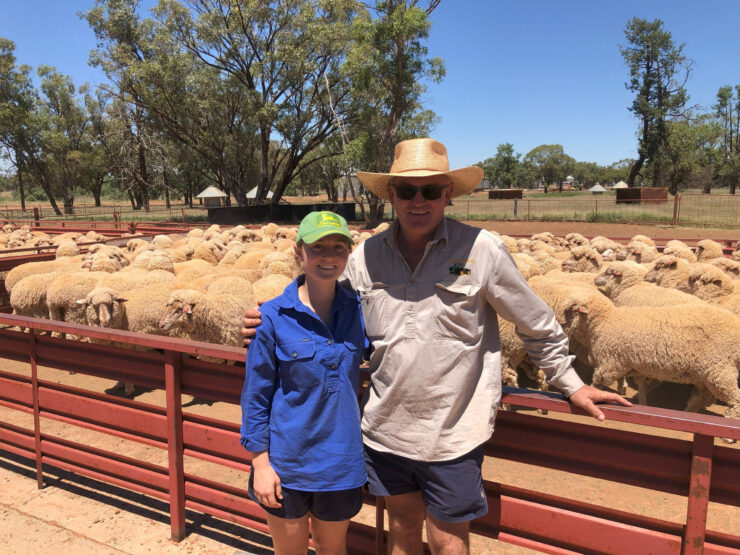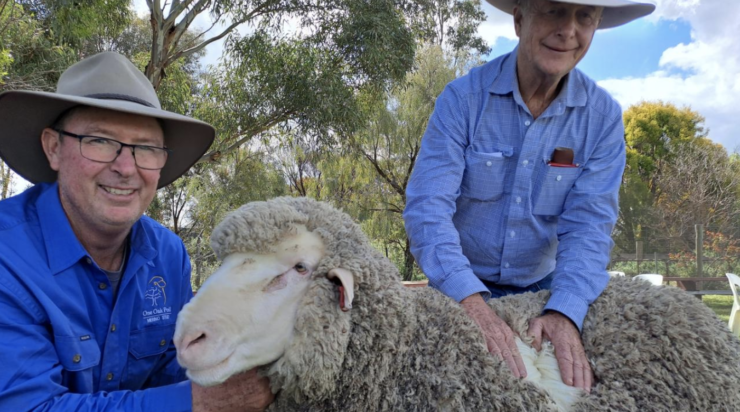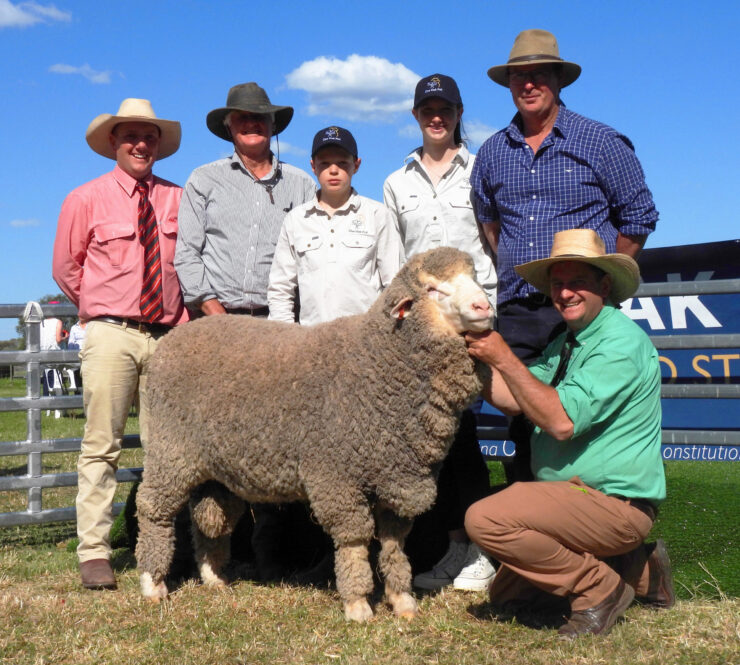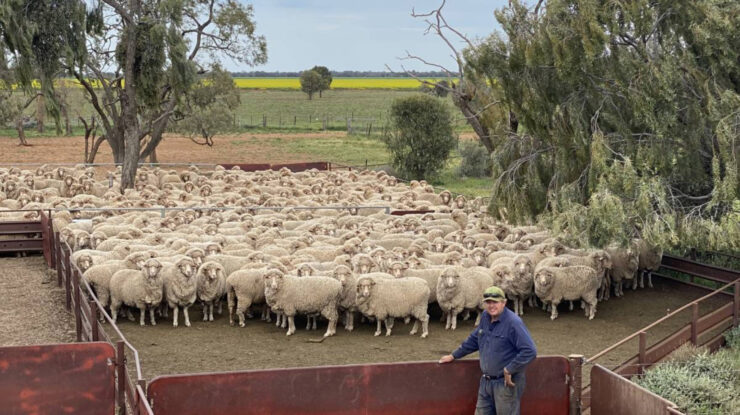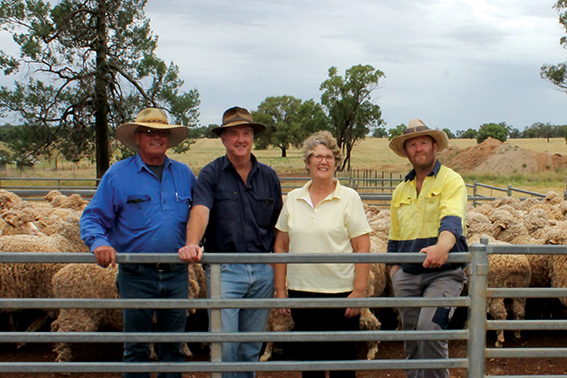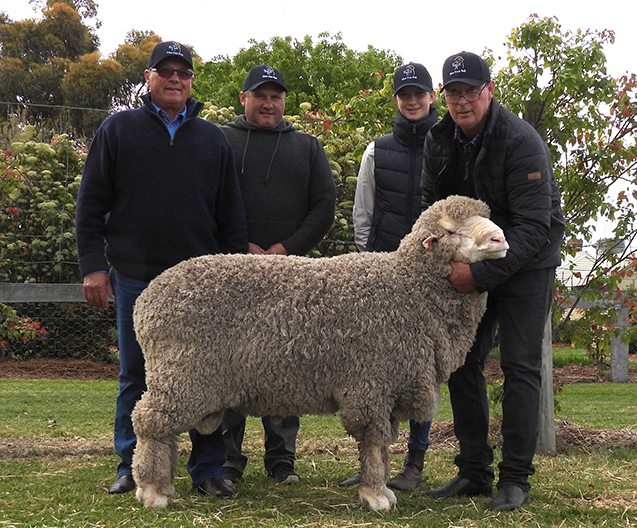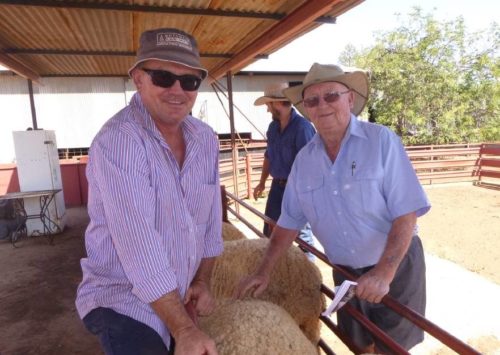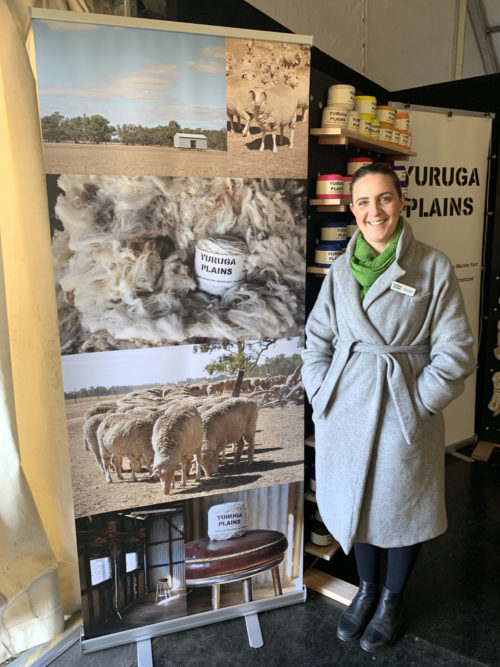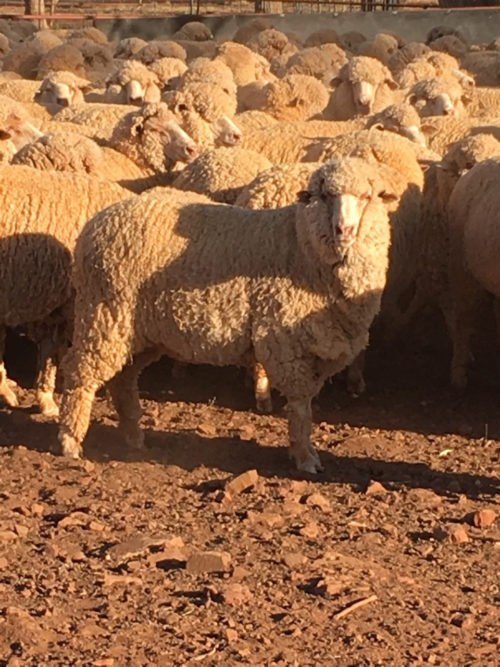A gut feeling about good lamb is paying off at One Oak Poll
By Julia Wythes The Land
August 9 2024 – 6:00pm
Alistair and Natasha Wells, One Oak Poll Merino stud, say there is more focus on meatier Merinos. Picture supplied
Finding a balance. This is what Alistair Wells is striving for when he looks over his stud Merino flock.
The principal at One Oak Poll Merino stud, Jerilderie, has a long tradition of growing terrific wool, but as demand for eating quality ramps up, he is finding that sheep that grow good wool often also produce delicious meat.
He’s got a gut feeling about how breeders can tell which Merino will produce good meat.
And, like many of his fellow Merino breeders, he is striving to excel in both meat and wool.
FOCUS ON TASTE
Mr Wells said a focus on eating quality in Merinos was not a new thing.
“It’s changed a lot over the past 25 years,” he said.
He said New Zealand sheep producers had already carried out research into eating quality in Merinos in the high country.
On a tour of New Zealand, Mr Wells tasted some Merino hogget, marketed as Silere in a restaurant.
“When I saw the marbling in it, I thought it was similar marbling to some of our well-nourished, quality wool Merinos,” he said.
Mr Wells said his father always had a theory about breeding good-eating Merinos.
Shearers have always said the Merino hogget is the best meat. It is the sweetest, best-flavoured meat because of the fat. Merino meat naturally has a different flavour.
“He always said the sheep with purple fat underneath get fat, shear well and produce good wool,” he said.
“As a breeder, you look for that dark purple skin, because it has good blood flow.”
He said in generations before, there was an understanding that the skin had a lot to do with productivity.
“Those that are loose in the skin and have a bit of fat on them are the best,” he said.
“A good quality, loose skin for growing wool that will shear well is also a skin that will peel off the body easier.
“It is one of those ways of selecting quality sheep and good wool producers, whether it be a plain-bodied or a sheep with a bit of skin, it’s a loose pelt.”
He said despite talk that plainer-bodied sheep had more meat, he often found the opposite.
“I’ve found that some of my heavier-skinned ones have fattened easier and have the purple skin,” he said.
“We tend to select against the plainer, drier wool types and prefer the free-growing, better wool types with nourishment.
“I’ve always felt like the nourishment in the wool is important. The fattiness in the wool is in the meat as well.”
He said this theory has been around for decades – especially if you ask a shearing contractor.
“Traditionally when the shearing team would camp out, the farmer would provide a killer. And these guys have always said the Merino hogget is the best meat.
“It is the sweetest, best-flavoured meat because of the fat. Merino meat naturally has a different flavour.”
TOWARDS DUAL
Mr Wells has been breeding Poll Merinos for years, as his father and grandfather did before him, and this was for one simple reason – to produce a dual-purpose sheep.
He worked in a number of places with Merino producers, including in New Zealand and Western Australia, and this strengthened his passion for the polls.
Mr Wells took on the family poll stud in 1990, and from the outset, he was focused on dual-purpose qualities, gathering ideas from working with South Africans, including Latelle and Dohne breeders.
“We were just trying to breed a meatier sheep,” he said.
“Many Merino breeders and myself have been breeding towards a quality dual-purpose Merino for a lifetime.”
One change he has made is his breeding strategies and selection process.
“Now when I do my selection, I put them in a pen and walk around. I don’t put them down a race first,” he said.
“I walk them around and around to see if they are the kind of sheep that I am looking for. It shows their balance.
“Some are a meatier type and others are more wool types, some are the balance of the two.
“You are trying to find ones with dominant traits that will breed on.”
Mr Wells said his father used South African Merino genetics in the stud, and he made use of their hardy, dual-purpose characteristics.
“It’s survival of the fittest where we are,” he said.
“Living on the edge of the Hay Plains, I have focused on selecting for constitution.
“For me, by not over-feeding them and letting them find their own way through as lambs, they will fatten under natural conditions. The toughest will always come to the top.
“You try genetics from one side of Australia to the other and try your damndest to blend these together with our own genetics to get the best you can.”
TO THE FUTURE
While producing good wool is still his main focus, he is open to looking more at eating quality as clients demand it.
He said a client of his who supplies a restaurant with lamb wanted Merinos with a big backend.
“As a farmer, I have to be profitable and help my clients. Constitution and surviving is a big one for me.
“With the introduction of electronic tagging, we are able to gather more information on individual sheep and this will make selection for different traits easier and more efficient.
“The use of DNA parentage and gene marking will also no doubt help.
“I would like to see that well-nourished wool is seen as a premium along with the quality of the meat that comes with it. You don’t have to breed a dry, harsh wool to have a meat sheep. You can have quality wool too.”



